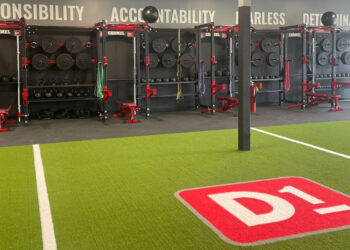It’s January again. It’s time to wipe the slate clean and start over with a new focus and new goals. Yes, if you’re making “resolutions,” you can start now. In the fitness industry, it’s one of the busiest times of the year because people are determined to set new fitness goals. And, every “resolutioner” says that this year is going to be different, right?
For many club members, new and not-so-new, the New Year is the traditional time to make change. Whether the goal is to lose weight, start exercising or a combination of both, the subject of nutrition typically arises. “What can I eat?” “How much can I eat?” “Is it good for me?” “Is it bad for me?”
As a Certified Nutrition and Wellness Consultant, I get these questions all year, but at this time of year I have the opportunity to reach more people and educate them about eating healthier. Even those members who think they are already eating healthy often are amazed at the changes they could make.
One of the classes I teach for members is called “What the Trainers Want You to Know.” I survey my colleagues about what they want their clients to know and do, and I present the information in a format that is lively and interactive. And naturally, I provide food. Food always works.
In class, I discuss fueling workouts and creating healthy habits. The first part of the discussion focuses on what exercisers should eat and drink before, during and after their workouts. Many members are often restricting their calories to lose weight and are surprised at the significance of eating within a two-hour window before and after working out. I usually offer some samples of snacks that they can make themselves, which are simple and cost-effective.
Then I move into the topic of how to eat healthy. This is where the members usually become very engaged as I provide practical and doable ideas about food quality and choices, while also dispelling some common myths. Since we know that proper food intake is 75-80 percent of success when it comes to changing body composition, I believe that such success is not based simply on numbers of calories, but also on the wholesomeness of the food.
The desired result is that members walk away with reliable information about the connection between their personal nutrition and their health and fitness. Most importantly, the club is now acting in the capacity of a facilitator and an advocate in support of their individual goals via nutrition and wellness education.
How is your club using nutrition to engage members? What has worked for you and what hasn’t? If you aren’t implementing nutrition, why?
Judith Samuels, M.A. is a certified nutrition and wellness consultant and master personal trainer at Sport&Health Clubs in the Washington D.C. Metro Area. She can be reached via e-mail at judi@judisamuels.com.








